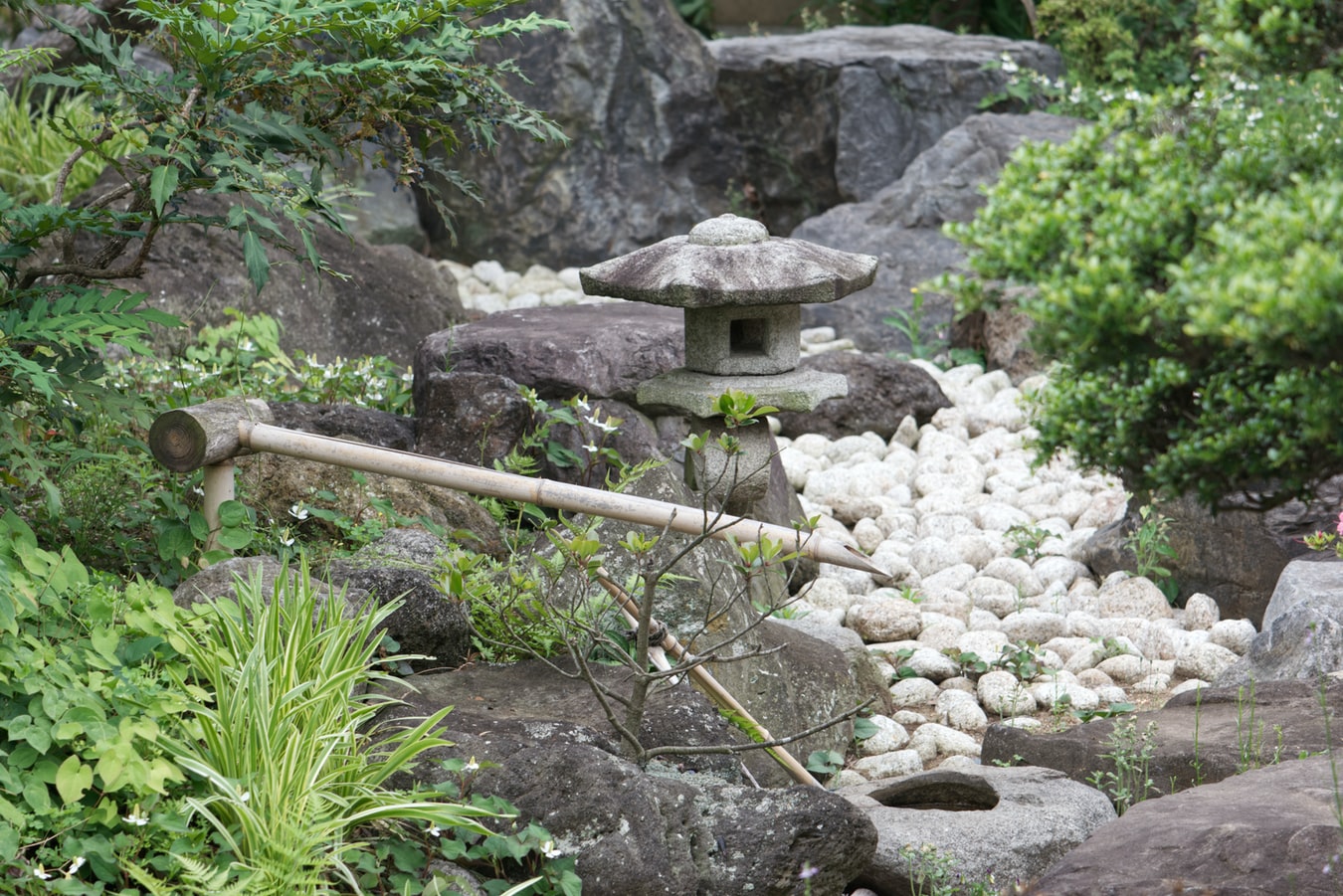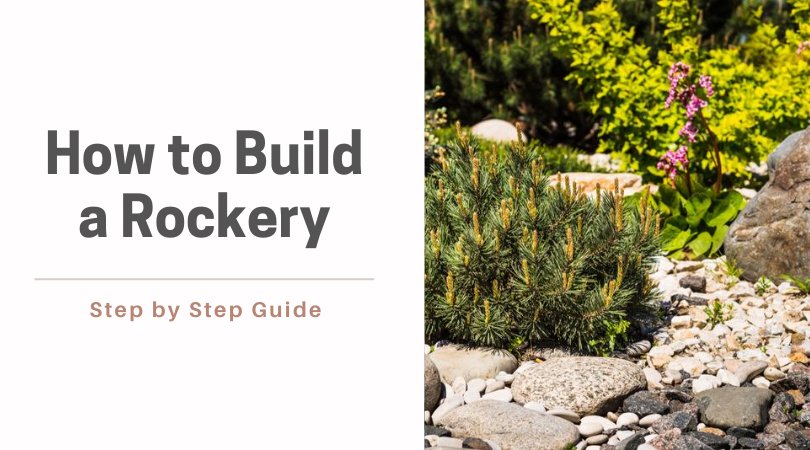
Building a garden rockery or a rock garden is a lovely way to add some interest to your outdoor space. If designed correctly, it can even be used to attract an array of wildlife to your garden too! Rock gardens are very substantial structures when built properly, and they are also very low-maintenance. There are many different ways to design a rockery which is what makes it such a fun thing to build; with the right tools and idea, you can really get creative and make the space unique. Which is what we're here to help you do!
In this guide, we'll walk you through the process of building a rockery, step by step. And, rest assured, you don't need to be an expert in garden design. We've covered everything from the materials you will need, some design ideas and also how to care for your rockery after it's been built too. Read on to find out more.
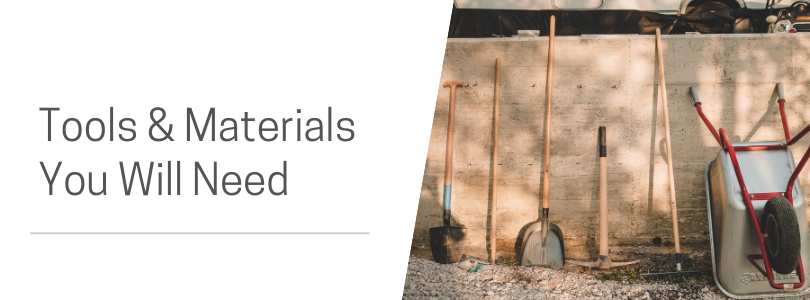
Tools & Materials You Will Need
Tools:
- Trowel
- Spade
- Wheelbarrow
- Crowbar
- Pegs and string
Materials:
- Rocks*
- Landscape fabric
- Enough rubble to cover the area
- Topsoil
- Compost
- Alpine plants
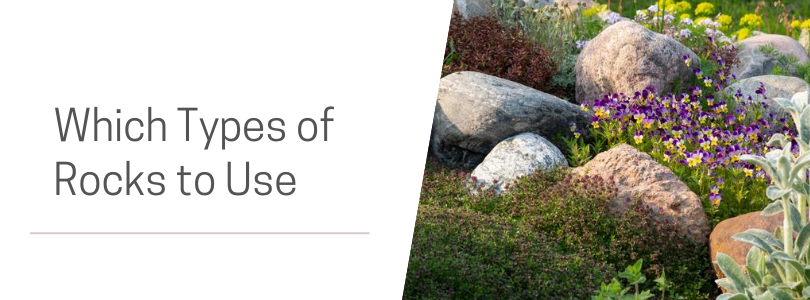
Which Types of Rocks to Use
* For your rockery garden, you'll need a lot of rockery stone in different sizes. Don't underestimate how many rocks you will need! Ideally, you will need enough large rocks to cover the area and then also enough smaller rocks for the surface. Ideally, you will be able to source your rocks locally. The best place to purchase the rocks you need is usually from either your local quarry or stone merchant. You can also check your local garden centre, although be aware that this could be pricier.

Rockery Plants
A rock garden creates the specialist environment that's perfect for growing a range of plants including various alpine species. Alpine plants usually grow on rocky slopes where there is good drainage in the soil and plenty of light, conditions that your rockery garden will be able to provide. Succulents and dwarf conifers are also popular options for rockeries.
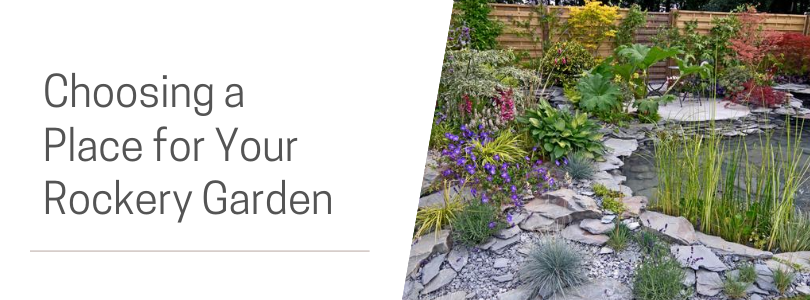
Choosing a Place for Your Rock Garden
Your rockery can be any size you like, big or small, however, there are a few things you'll want to take into consideration when choosing a spot for your rock garden. The alpine plants that you'll be using for your rockery require lots of light. For this reason, it's best to choose a place for your rockery that's open and clear of any trees or shrubs that might cast shadows over the area. Ideally, your rockery will be exposed to a few hours of direct sunlight each day.
Rockeries are very versatile and can be built on either a slope or level ground. If you are building on level ground, however, you might want to dig down slightly at the front to create a small mound, since this will give your rockery some depth and make it more easily visible across the garden space. This will also help to enhance the drainage of your rocker, which is key. Rockeries can work really well next to running water, so if you already have a pond in your garden this might be something to consider.
How to Build a Rockery in 9 Steps
Step One: Plan Your Rockery
Rockeries can range from sprawling and naturalistic to contained and organised. Basically, there's no wrong way to design a rockery! The most popular seasons for building a rockery is usually autumn or wintertime, however, you can build your rockery any time of the year. Try to build your rockery garden a few days after rainfall, however, so that the ground is soft and easy to manipulate.
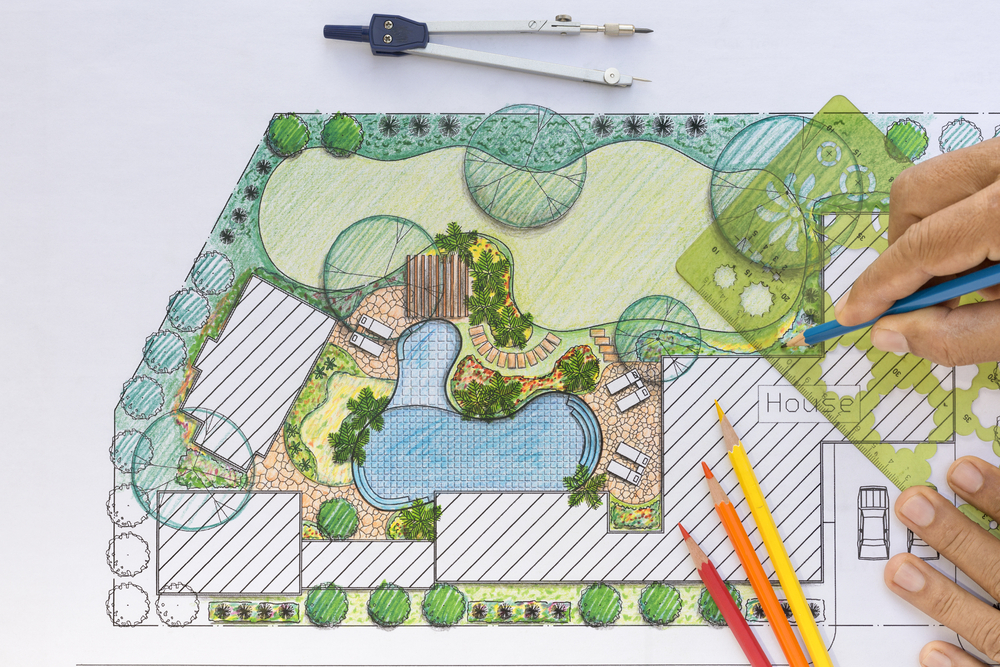
Step Two: Mark Out the Area
Now that you've found the perfect spot, you need to mark where you're going to be building with pegs and string.
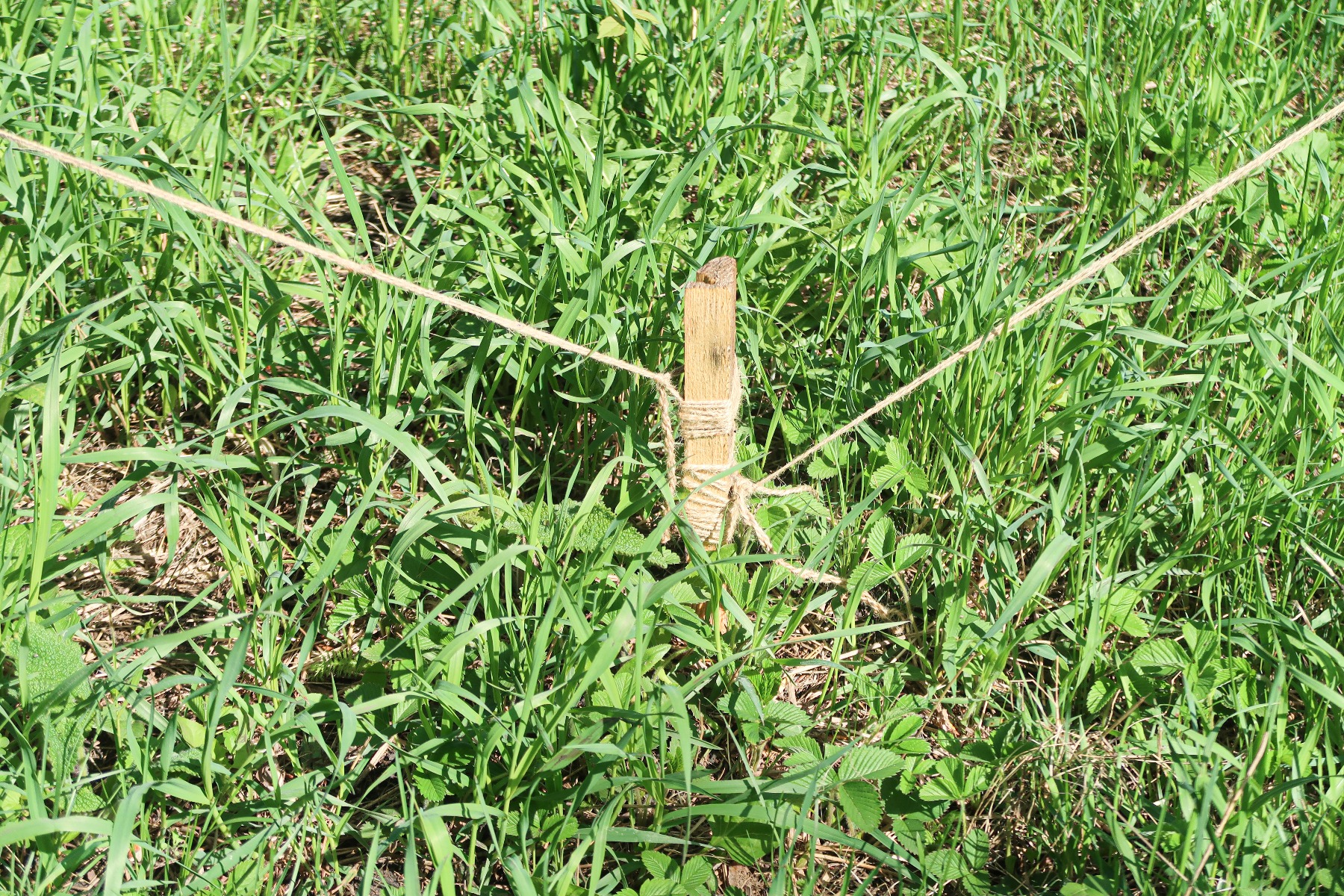
Step Three: Prepare the Space
Before building your rockery, you will need to prepare the area, which means removing any existing weeds from the site. It's crucial that the area is entirely weed-free since weeds that get out of control can start to destabilise the rockery structure over time. If there are a lot of weeds in the area or perennial tough weeds, you may need to use weed killer first before continuing to build your rockery.
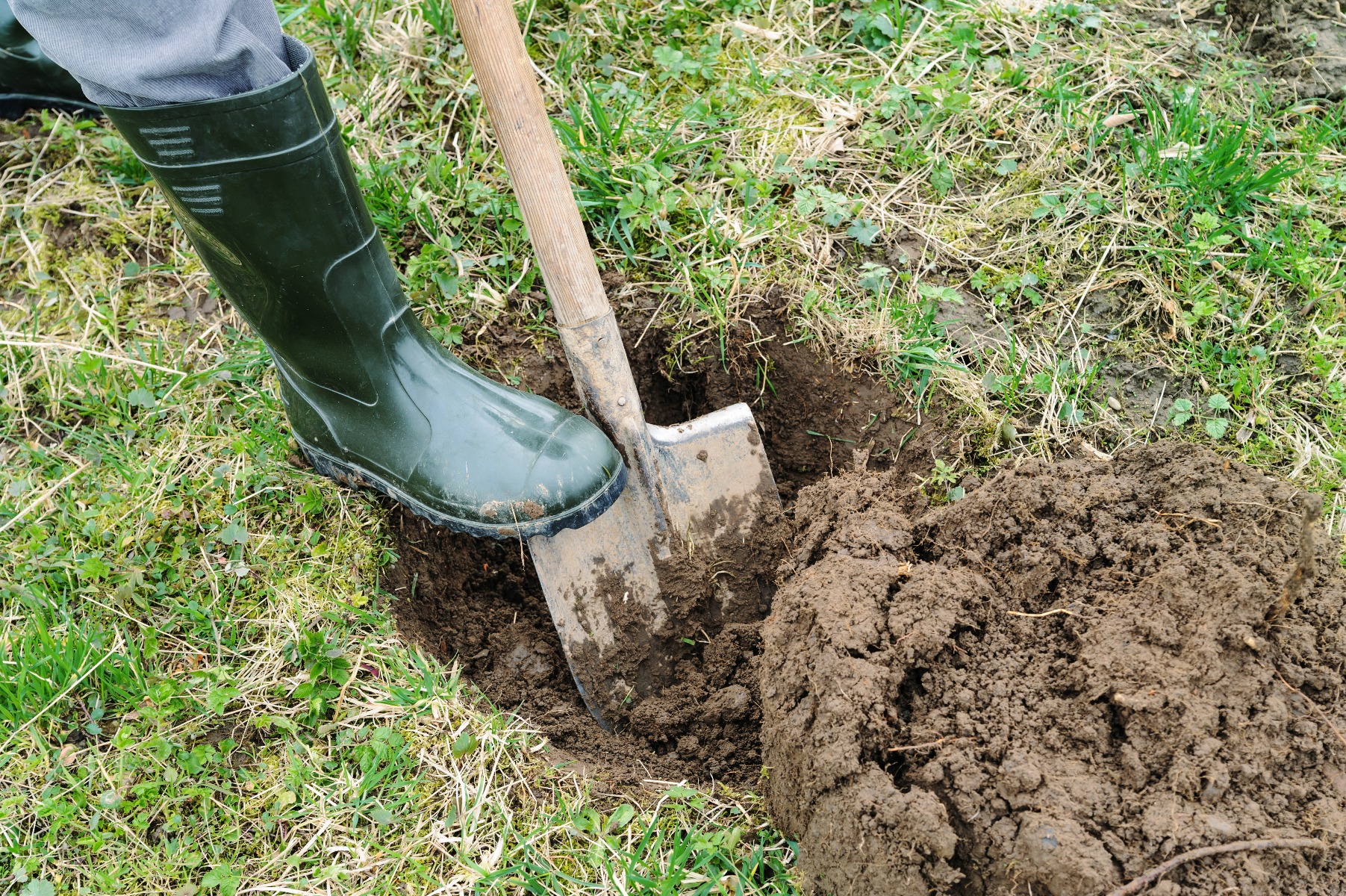
Step Four: Place Rubble Over the Area
The next thing to do is to add a layer of rubble across the area for drainage and to create a supportive base for the rocks you'll be placing on top. Good drainage is key to a healthy rockery garden!
Step Five: Place Landscaping Fabric Over the Area
Add a layer of landscaping fabric over the surface of your rockery. This will help prevent weeds from growing up through the gaps in your stones and to keep the garden soil in place.
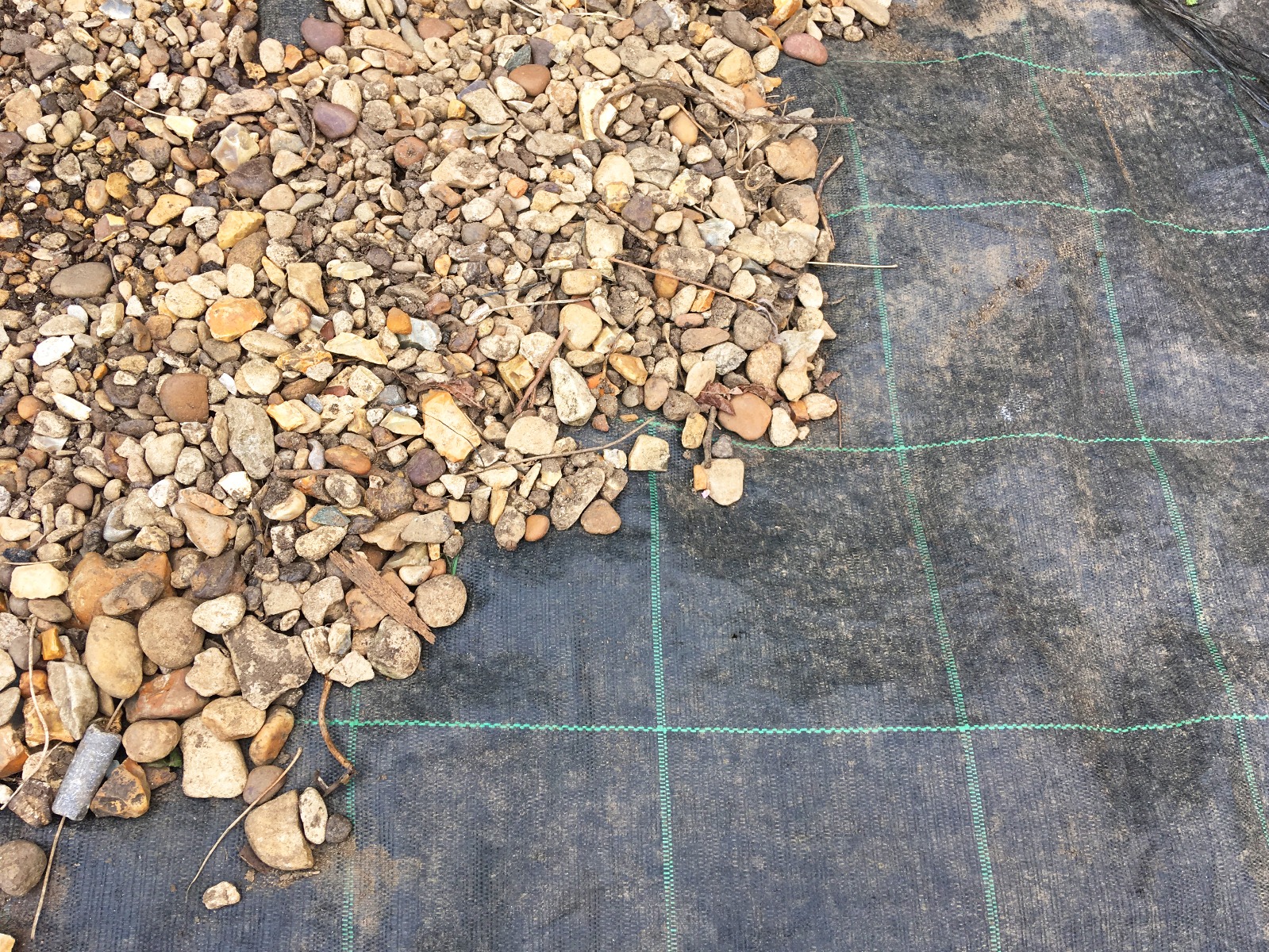
Step Six: Start Adding Your Stones
Now that we've set the foundations for your rockery, it's time to start adding the stones. Start by adding the biggest rocks, also known as 'keystones.' Place them across your rockery and try to build them upwards so that they reach a peak. Make sure that you face the rocks in different directions since this will help create a microclimate, which will help to keep your rockery plants healthy. Bed your rocks with soil and some small stones. Choose some stones that are the right size to create an outer wall for your rockery. They don't need to be too uniform, just to add some definition to the structure. Bed these rocks with soil too.
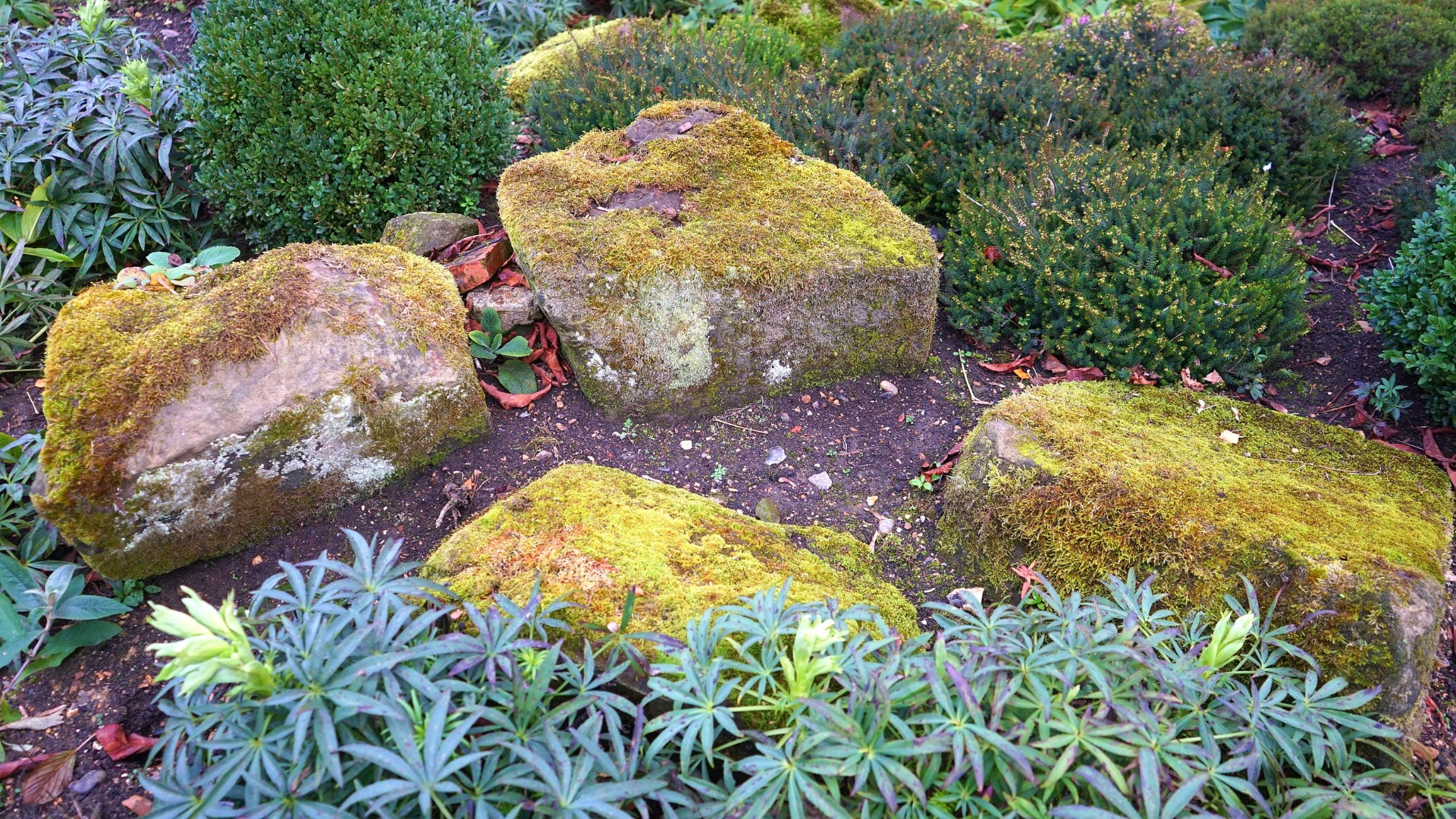
Step Seven: Add Smaller Rocks
Fill in the gaps with smaller rocks and make sure to leave some planting pockets where you can create a bed for your plants and flowers.
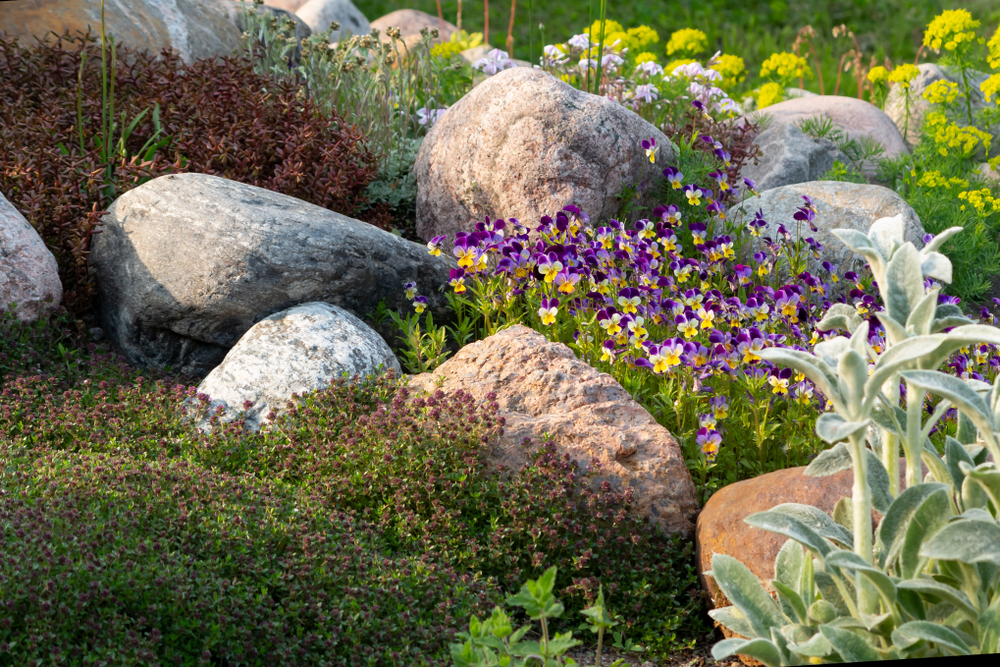
Step Eight: Make Compost Mix
You can make your own compost for alpine plants by mixing equal quantities of weed-free topsoil, horticultural grit and either leaf mould or coir. Once you have your compost mix, use it to fill the planting pockets and any crevices between rocks.
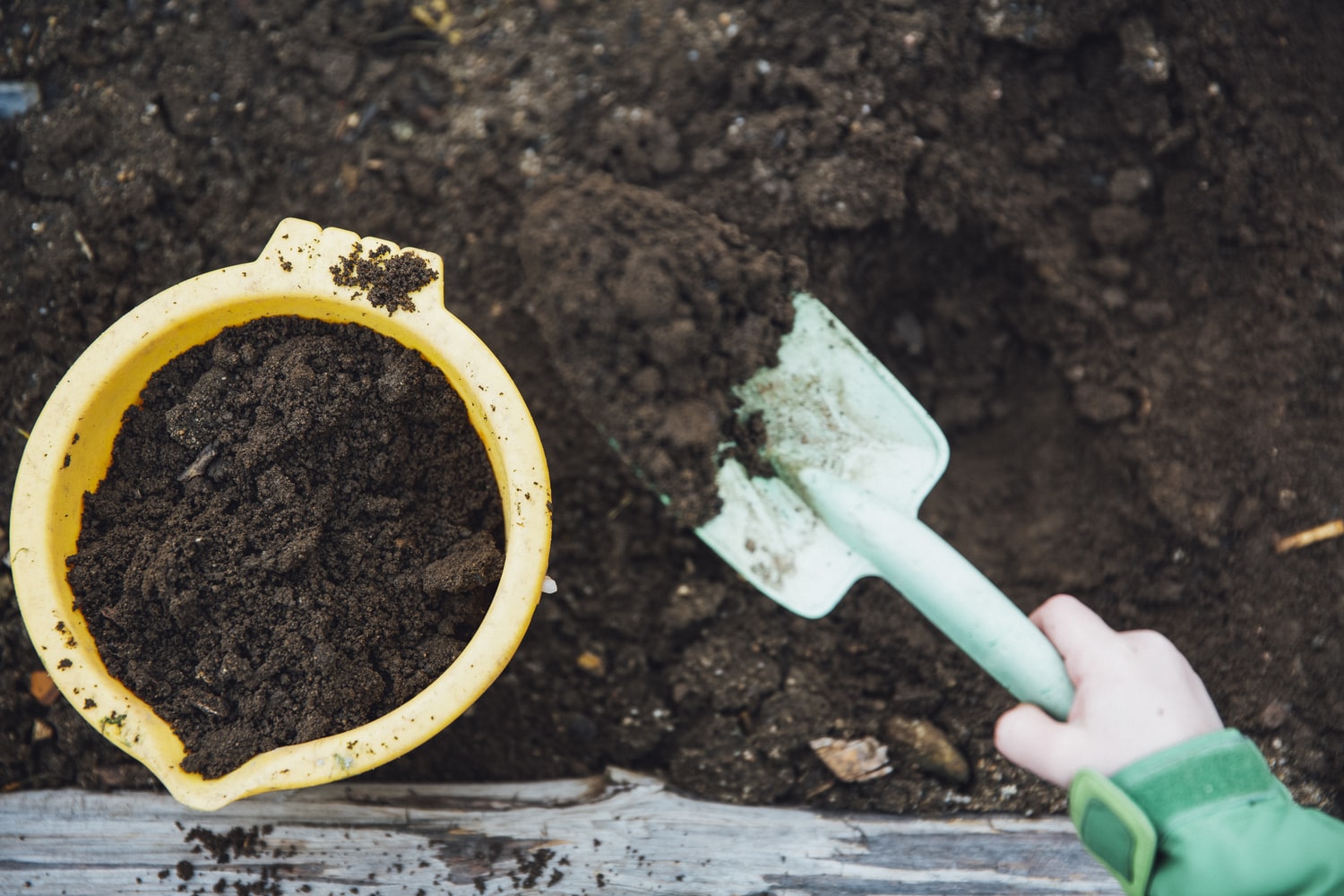
Step Nine: Add Your Plants
Water your plants and then put them into position within your rockery garden. Make sure plants are planted firmly in your compost mix and gently tease out the roots of your plants and put them in your planting pockets. Finally, add a handful of grit or gravel as a mulch layer to improve the drainage of the soil. When placing your plants, remember that sun-loving plants are best facing south whilst more shade-tolerant species are better facing north.
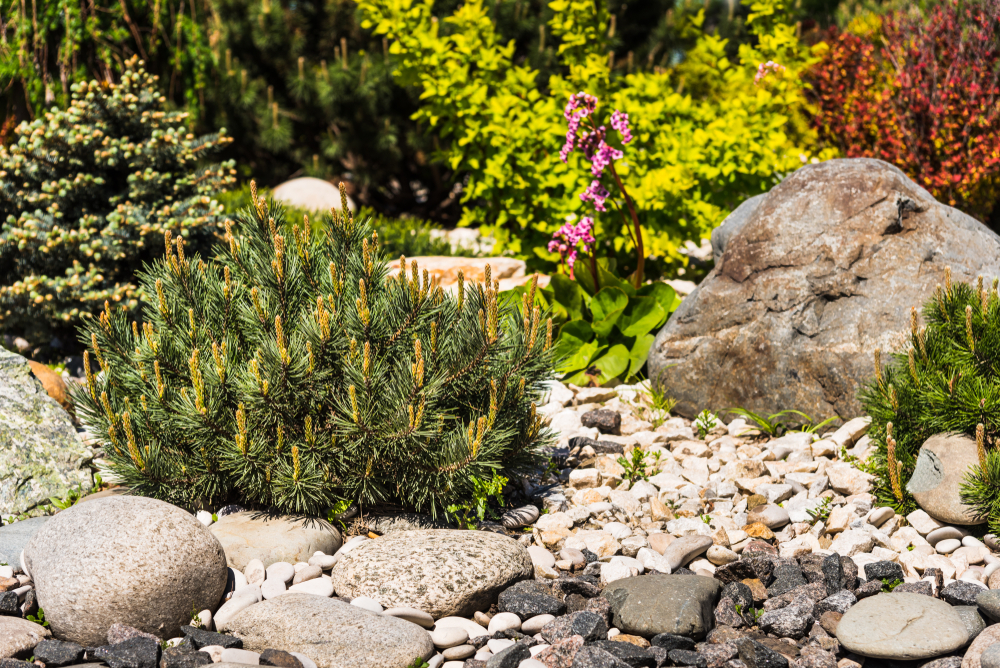
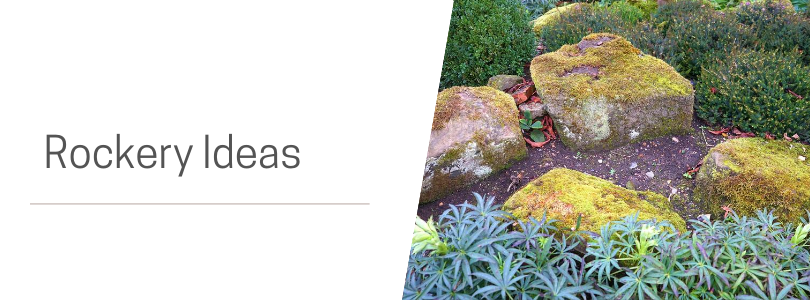
Rockery Ideas
Before you get started with building a rockery, spend some time researching different rockery garden design ideas. Rock garden design is very versatile and there is no wrong way to create your rockery however, it's good to have a few different ideas before you start out. Below, we have provided a few different examples of our favourite rock garden ideas to give you some inspiration and ideas for your own project!
- Japanese rock garden
- Rock garden with a water feature
- Rock garden built around a garden pond
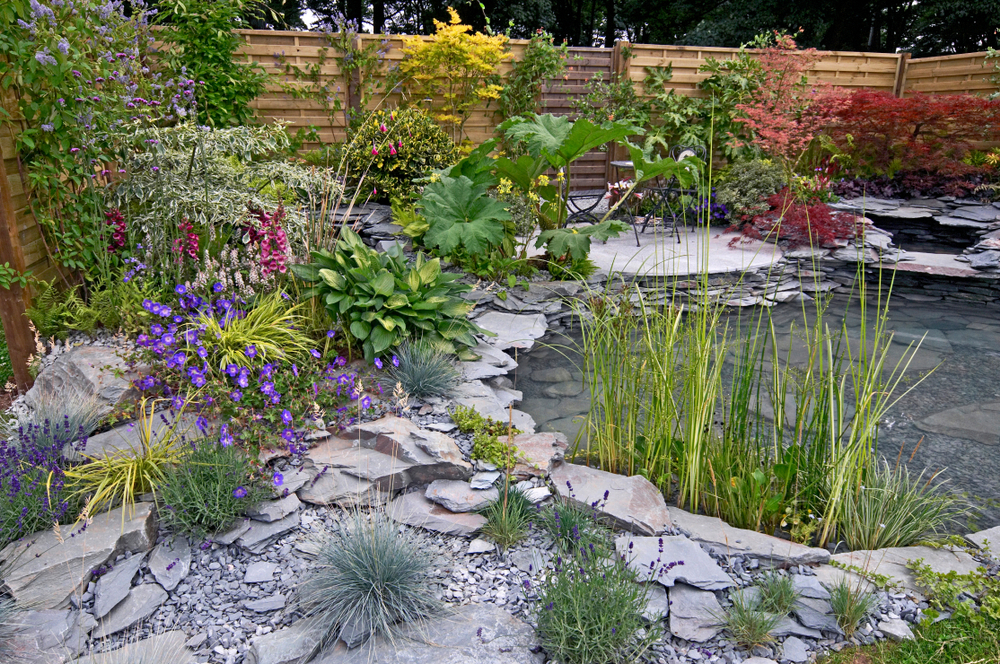
- Zen garden
- Rock garden with flower beds
- Water garden
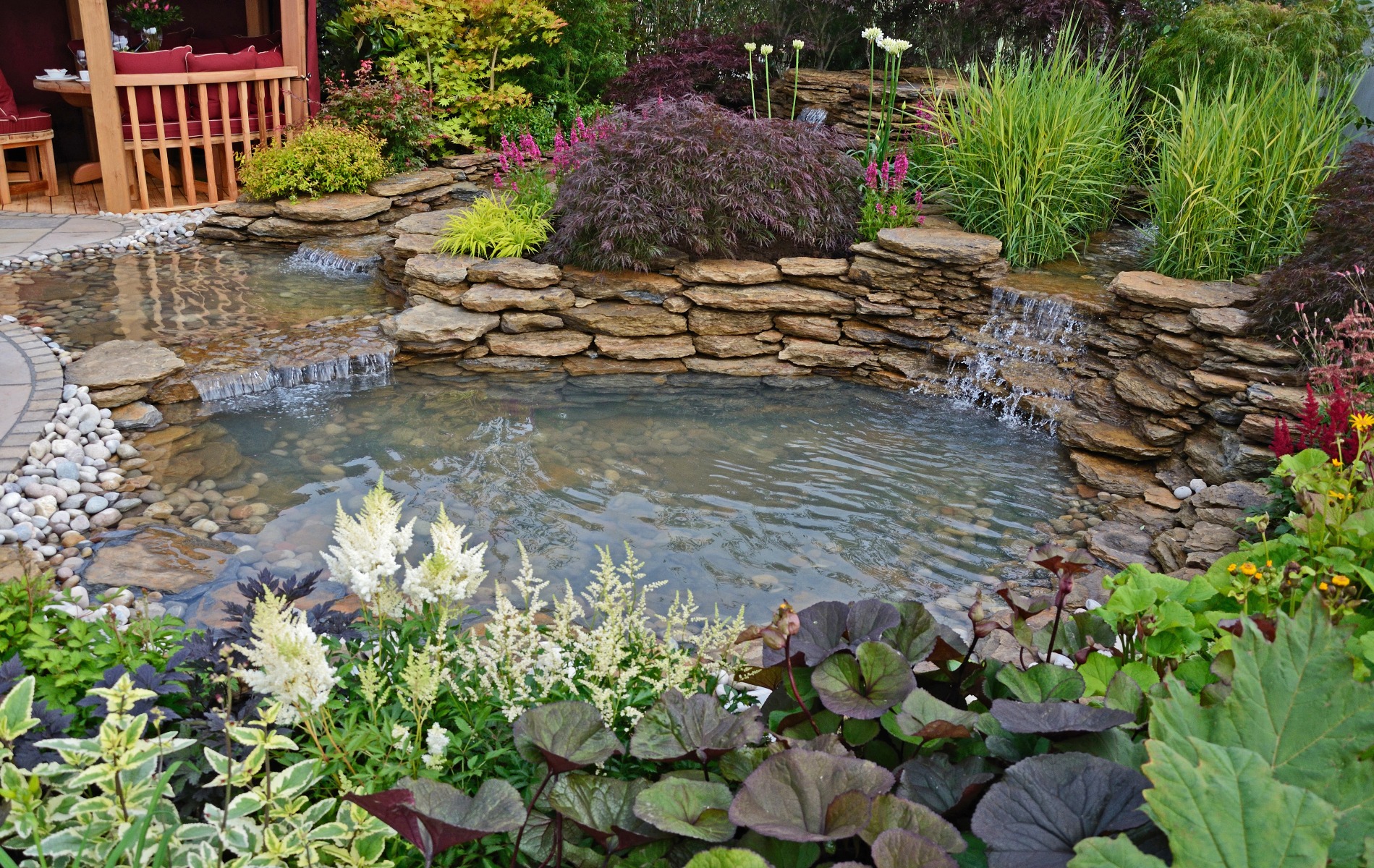
- Rockery around a garden path
- Small rock garden
- Herb garden
